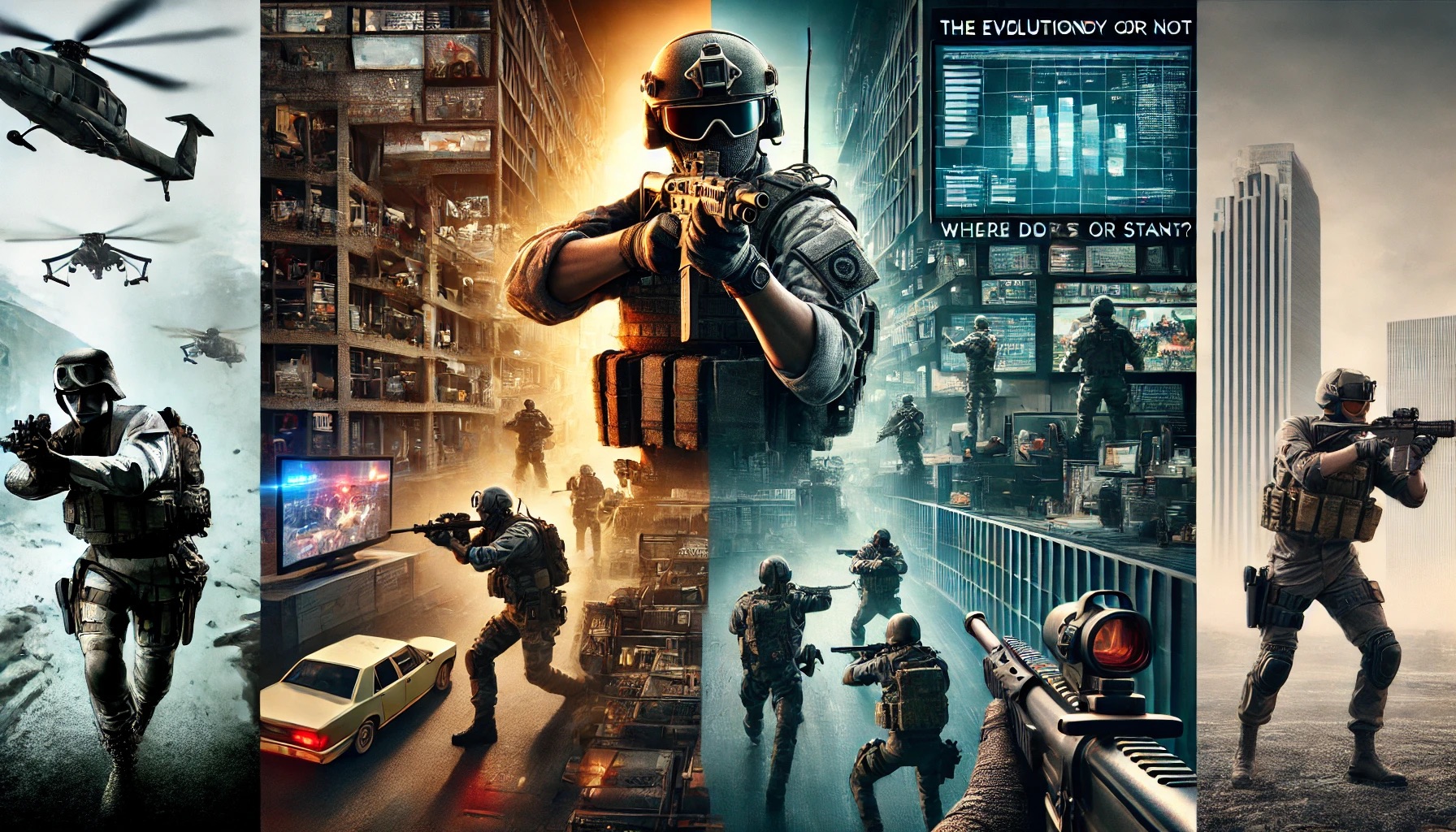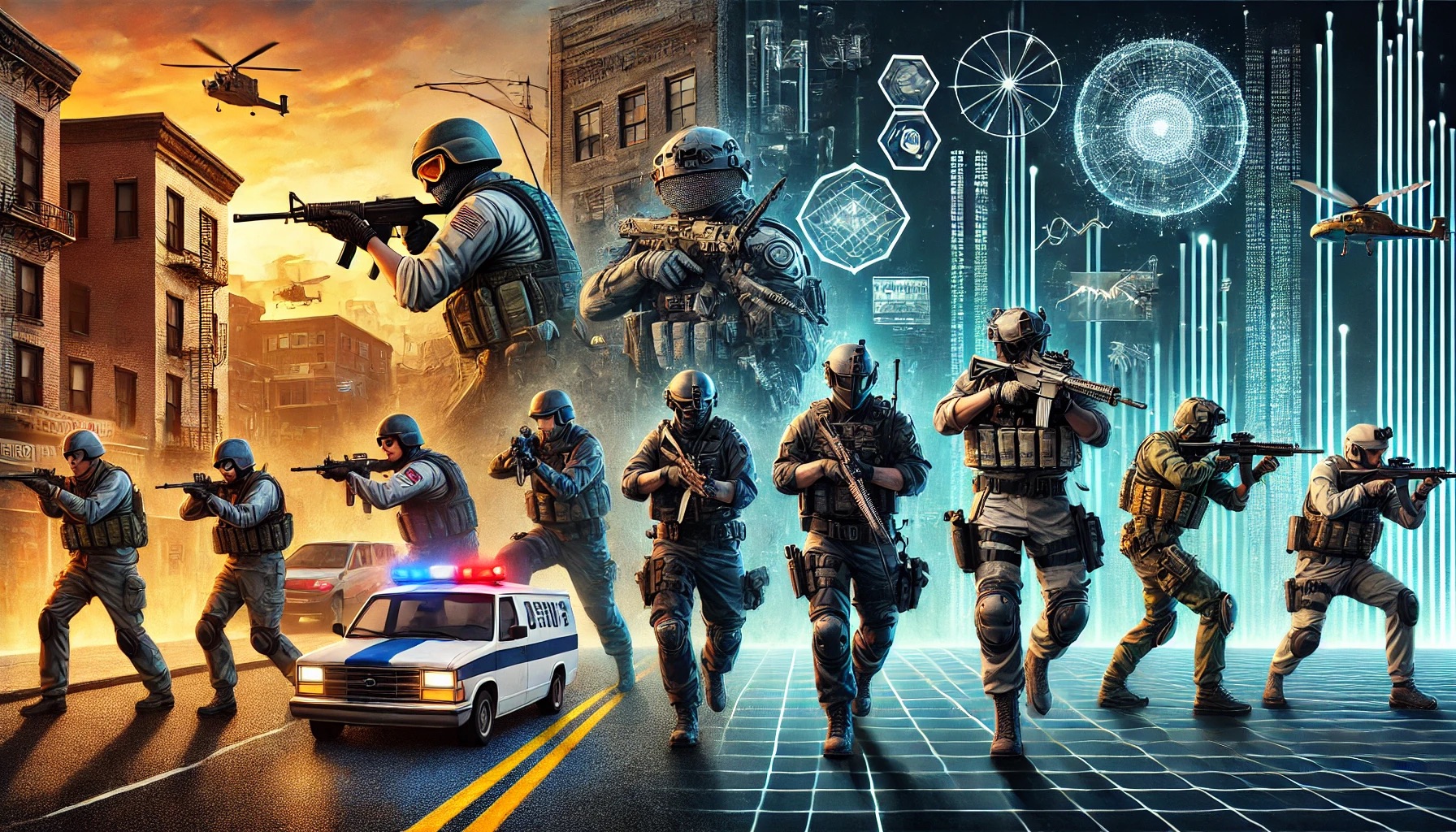Tactical first-person shooters (FPS) offer a different kind of intensity compared to traditional run-and-gun shooters. Instead of relying on quick reflexes and fast-paced action, these games demand strategy, teamwork, and precision. Over the years, the genre has evolved significantly, and "Ready or Not" has positioned itself as one of the most realistic and engaging entries in modern tactical shooters. This article explores the history of the genre and evaluates where "Ready or Not" fits in this evolution.

The Origins of Tactical FPS Games
The late 1990s and early 2000s were defining years for tactical shooters. Games like Rainbow Six (1998) and SWAT 3 (1999) introduced players to methodical, strategy-driven combat. These games emphasized planning and execution over brute force, setting a new standard for the genre.
In Rainbow Six, players controlled an elite counter-terrorism unit, planning each mission in detail before executing their strategy. One wrong move could result in mission failure, making every decision critical. Around the same time, SWAT 3 brought a more grounded law enforcement perspective, focusing on the rules of engagement and non-lethal options.
Tactical Shooters Expand Their Reach
As the genre matured, new franchises emerged, refining the mechanics introduced by their predecessors. Ghost Recon (2001) took the tactical experience into large outdoor environments, providing players with freedom in approaching objectives. Meanwhile, SWAT 4 (2005) built upon its predecessor’s law enforcement framework, requiring players to follow strict protocols, such as issuing commands and ensuring suspect compliance before engaging.
However, the mid-2000s also saw a shift toward more action-driven gameplay in tactical shooters. Franchises like Rainbow Six moved away from meticulous planning and leaned into fast-paced gunplay. Rainbow Six: Vegas (2006) introduced cover-based mechanics and a more streamlined approach, catering to a broader audience. While this made the genre more accessible, it also diluted some of the elements that originally defined tactical FPS games.

The Resurgence of Tactical FPS Games
Despite the industry’s shift toward mainstream shooters, demand for traditional tactical FPS experiences never disappeared. Indie developers and smaller studios saw an opportunity to revive the genre, leading to the rise of more grounded and realistic titles.
Games like Insurgency (2014) and Squad (2015) focused on team coordination and realistic gunplay, reintroducing elements that had been abandoned by larger franchises. These games proved that there was still a strong audience for slower, more methodical shooters that prioritized realism over spectacle.
Where Does Ready or Not Fit In?
"Ready or Not" builds upon the foundation set by classics like SWAT 4, offering an intense, realism-focused approach to law enforcement operations. Unlike many modern shooters, it doesn’t reward reckless play. Instead, it requires players to plan carefully, communicate effectively, and make split-second decisions under pressure.
Key Features That Define Ready or Not
- Realistic Gunplay – Weapons in "Ready or Not" behave as they would in real-life. There are no arcade-style mechanics; accuracy, recoil control, and ammunition management play a crucial role in engagements.
- Non-Lethal Options – The game encourages players to use non-lethal force when appropriate. Tasers, bean bag rounds, and pepper spray offer alternatives to lethal weapons, reinforcing the rules of engagement.
- Mission Variety – Scenarios include high-risk warrants, hostage rescues, and active shooter situations. Each mission demands a different approach, requiring players to adapt their strategies.
- Team Coordination – Whether playing solo with AI teammates or in multiplayer with other players, coordination is essential. Issuing commands, covering angles, and maintaining formation are key to success.
- AI-Driven Environments – Civilians and suspects react dynamically to player actions, making every encounter unpredictable.
How Ready or Not Stands Out
Compared to other modern tactical shooters, "Ready or Not" offers one of the most in-depth law enforcement experiences. While games like Insurgency and Squad focus on military combat, "Ready or Not" brings the unique challenge of police operations, where rules of engagement are stricter and force must be used responsibly.
The game also embraces the single-player experience more than many of its counterparts. While tactical FPS games often emphasize multiplayer, "Ready or Not" provides a rich solo campaign where players can command AI teammates effectively, simulating real SWAT operations.
The Future of Tactical FPS Games
With "Ready or Not" leading the charge, the future of tactical FPS games looks promising. VOID Interactive has committed to ongoing updates, improving AI behavior, expanding mission content, and refining mechanics based on player feedback. Meanwhile, the demand for slower, more strategic shooters continues to grow, proving that the genre still has plenty of room to evolve.
Where to Buy Ready or Not
For players who want to experience one of the most realistic tactical FPS games available, "Ready or Not" is available for purchase. Get your Steam CD Key at RoyalCDKeys and lead your SWAT team through high-stakes missions.
Final Thoughts
The evolution of tactical FPS games has been shaped by shifts in player expectations and industry trends. From the early days of "Rainbow Six" and "SWAT 3" to modern titles like "Ready or Not," the genre has undergone multiple transformations. However, the demand for slow, strategic gameplay remains strong, and "Ready or Not" is a testament to that. With its commitment to realism, deep mechanics, and evolving content, it solidifies itself as a modern benchmark for tactical shooters.
Don’t forget to explore our previous post: Personal Improvement Plan to Boost Employee Growth